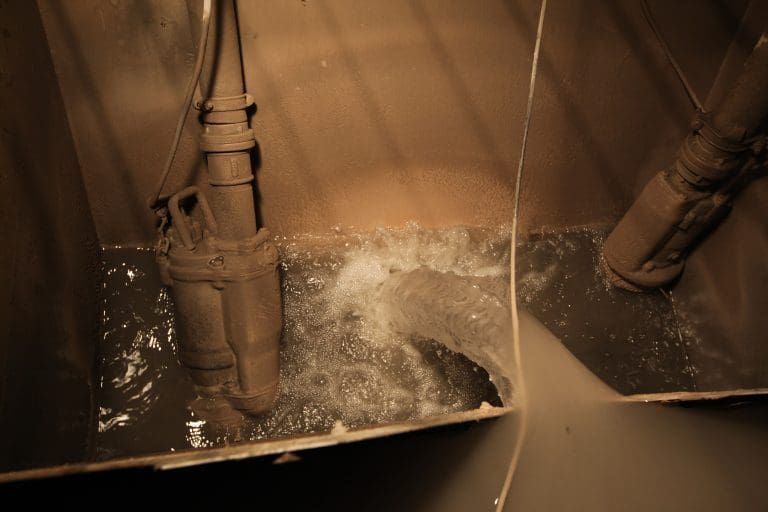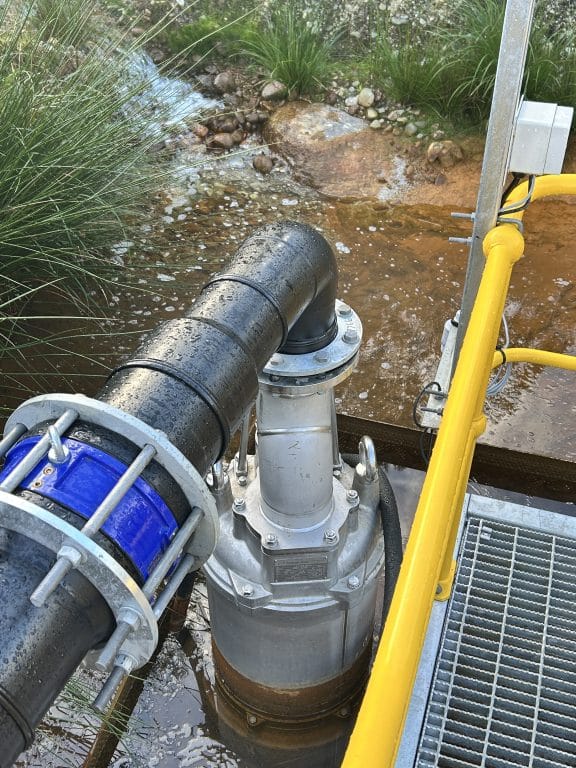
In Australian mining, where production targets are tight and conditions are unforgiving, the real cost of a pump is rarely the number on the purchase order. Energy, maintenance, unexpected stoppages, spare parts, and premature replacements all contribute to the true figure, its life cycle cost.
Over time, these hidden expenses can far exceed the initial purchase price, eating into margins and disrupting production schedules. Understanding lifecycle cost is critical for mine operators under pressure to deliver safe, efficient, and profitable operations.
The key is recognising that a pump’s value lies not just in getting the job done today, but in how reliably and economically it will keep doing the job in the years ahead.
This article explores the lifecycle cost of mining pumps, why upfront investment in quality equipment pays off, and how Tsurumi pumps are helping mines across Australia reduce downtime and lower their total cost of ownership.
What Lifecycle Cost Really Means in Mining
Lifecycle cost (LCC) represents the total cost of owning and operating a pump from acquisition through to decommissioning. It’s a framework that goes beyond sticker price and considers the real financial impact of pump ownership.
The Main Components of the Lifecycle Cost
- Acquisition costs: purchase price, freight, installation, commissioning, and training
- Operation: energy consumption, duty cycles, and control strategies
- Maintenance: scheduled inspections, wear parts, consumables, and labour
- Downtime: production losses, safety risks, and emergency fixes when pumping systems fail
- End of life: removal, disposal, and replacement costs
In mining, lifecycle cost is not just an accounting concept; it’s a daily operational reality. When a pump breaks down in the pit or fails to keep dewatering lines running, production stops. For mines moving thousands of tonnes per shift, the financial impact of downtime can be staggering.
 The Hidden Cost of Downtime
The Hidden Cost of Downtime
Few aspects of lifecycle cost are as underestimated as downtime. A single failed pump can halt critical processes like dewatering, haulage, or ore processing. The immediate loss of throughput is obvious, but the ripple effects can be even more costly.
Downtime multiplies lifecycle cost by:
- Lost productivity: every hour of stalled production reduces output targets
- Emergency maintenance: urgent call-outs, express parts freight, and overtime pay inflate service costs
- Safety and compliance risks: makeshift fixes under pressure can compromise worker safety and environmental compliance
- Collateral damage: associated systems such as motors, pipelines, or sumps may suffer knock-on effects
Reducing downtime is one of the most effective ways to cut lifecycle cost. That means choosing pumps designed for long service life, ensuring they are matched correctly to duty conditions, and maintaining them proactively.
Corrosion-Resistant Pumps: Lower Cost Between Services
Mining water is rarely benign. It may contain dissolved salts, acids, abrasive solids, or hydrocarbon residues. Over time, these attack standard pump materials, leading to roughened surfaces, widened clearances, and reduced efficiency.
Corrosion doesn’t just look unsightly; it drives up costs by shortening service life. Corrosion-resistant pumps, however, shift the economics. By resisting chemical attack, they hold their performance curve longer, extend service intervals, and reduce the consumption of spare parts.
Key advantages of corrosion resistance
- Extended service life: stainless steel and high-grade alloys resist attack, lasting years longer than cast iron in corrosive waters
- Reduced maintenance: seals, bearings, and impellers operate in cleaner, less aggressive conditions
- Predictable service intervals: maintenance becomes planned, not reactive
- Fewer unplanned stoppages: stable materials mean fewer breakdowns during critical shifts
Tsurumi’s stainless-steel SFQ series can handle aggressive mine waters. By cutting down service intervals, these pumps free up maintenance resources and keep mine operations running smoothly. Even if the upfront investment is higher, the total cost of ownership drops substantially.
Energy Efficiency: Small Gains, Big Multipliers
Energy is one of the largest ongoing costs in mining, and pumps are among the most energy-hungry assets on site. A modest gain in efficiency compounds across thousands of operating hours.
Efficient pumps reduce kilowatt-hours per cubic metre pumped, lowering electricity bills and helping sites meet sustainability targets. They also run cooler and with less vibration, which reduces stress on seals, bearings, and motors—extending their service life.
Energy-efficient mining pumps
- KTZE & KTVE series: Tsurumi’s energy-saving models, engineered to balance performance with lower operating costs
- Optimised duty matching: aligning the pump’s best efficiency point with actual site conditions avoids wasteful throttling and premature wear
- Environmental benefits: reduced energy demand lowers carbon footprint, a growing concern for Australian mines facing stricter sustainability expectations
When energy costs are measured over the lifespan of a pump, efficiency is not optional—it’s a key driver of lifecycle savings.
Selecting the Right Pump for the Duty
No two mine sites are identical, and water conditions can change dramatically across operations. Selecting a pump without carefully matching it to the duty can lead to poor performance, excessive energy use, and early failure.
Considerations for Correct Pump Selection Include:
- Hydraulic duty: flow rate and head requirements
- Solids content: slurry, abrasiveness, or debris load
- Water chemistry: salinity, acidity, hydrocarbons, and variability
- Power supply and controls: VSD compatibility, overload protection, and reliability
Tsurumi’s mining-ready pump series range
- LH: cast iron drainage with optional high-temperature or sea-water resistant versions
- LH-W-14: for deep dewatering and high-pressure duties
- LH-14: a high-head stainless-steel dewatering workhorse for sustained heavy use
- SFQ: stainless-steel pumps that handles aggressive and corrosive water
- KTZ: dewatering pumps made with high chromium cast iron impellers to withstand demanding conditions
- KTZE & KTVE series: energy-efficient solutions for sump and pit applications
By matching the pump curve with the mine’s actual duty point, operators can minimise energy use, extend component life, and avoid costly downtime.
The False Economy of “Cheap” Pumps
A pump with a lower sticker price can appear attractive, but in reality, it may deliver the highest lifecycle cost. Cheap pumps often come with design compromises: lower efficiency, inferior materials, and poor sealing systems.
These translate directly into higher electricity bills, more frequent maintenance, and shorter service lives. The result is more unplanned stoppages, more emergency repair costs, and ultimately more money spent over time.
By contrast, pumps designed for durability and supported by strong local service networks, like those from Tsurumi, provide:
- Lower energy costs thanks to higher efficiency
- Longer duration between downtime
- Readily available spares and technical expertise in Australia
Investing in quality upfront means avoiding the cycle of breakdown, repair, and replacement that erodes profitability.
 Maintenance That Extends Service Life
Maintenance That Extends Service Life
Maintenance is one of the strongest levers mines have to reduce lifecycle costs. Rather than reacting to failures, a structured preventive approach keeps pumps running at their best.
Three Essential Practices
- Routine inspections: daily and weekly checks for leaks, cable integrity, and unusual vibrations help catch problems before they escalate
- Cleaning and flushing: removing sediment, scale, or corrosive residues preserves the wet end and slows wear. After exposure to acidic or saline water, flushing is essential
- Planned service intervals: replacing seals, bearings, and impellers predictively avoids emergency shutdowns and keeps operations steady
Record-keeping is just as important. By logging operating hours, interventions, and part replacements, operators can identify wear patterns and fine-tune maintenance schedules.
Controls, Installation, and Operation
Lifecycle cost is not determined by pump design alone. Correct installation and operation are equally vital.
- Smart controls: variable speed drives reduce dry-running, assist with energy-saving and adjustment of the liquid flow or pressure
- Installation standards: correct motor rotation, cable management, and discharge pipe layouts minimise mechanical stress
- Operator awareness: crews trained to respond to alarms and maintain clean intake, prevent small issues from snowballing into failures
By treating installation costs and operation as part of the lifecycle cost equation, mines ensure pumps deliver their full value.
Putting Numbers to Lifecycle Cost
Evaluating lifecycle cost doesn’t need to be complicated. A structured five-step approach reveals the true economics.
How to Model Lifecycle Cost:
- Define duty and runtime: flow, head, and expected operating hours per year
- Estimate energy consumption: based on efficiency at actual duty points
- Add maintenance and spares: seals, bearings, impeller, suction cover and labour
- Assign downtime costs: lost production hours × margin per tonne
- Compare over 1-3 years: include sensitivity for harsher conditions or increased head
- Add maintenance and spares: seals, bearings, impeller, other wear parts, labour, and recurring material consumption costs
This life cycle cost analysis consistently shows that quality submersible pumps outperform cheaper alternatives in real-world mining conditions.
Where Tsurumi Pumps Fit in Australian Mining
Tsurumi pumps are engineered for the realities of Australian mine sites: corrosive waters, abrasive slurries, variable conditions, and remote locations where downtime is costly.
- Corrosion-resistant alloys extend service life and reduce maintenance costs
- High-efficiency hydraulics cut energy use and protect components
- Proven models like the LH, SFQ, KTZ/E, GPN and KTV/E series are tailored to common mining duties
- Local service and support ensure spare parts and expertise are always available when needed
From coastal saline exposures to acidic pit waters and debris-laden sumps, Tsurumi’s track record in Australia demonstrates reliability, efficiency, and long-term value.
Conclusion: Why Upfront Investment Pays Off
In mining, the pump you choose can either drain resources or protect margins. Lifecycle cost provides the clearest lens for decision-making, capturing not just purchase price but the ongoing costs of energy, maintenance, downtime, and replacement.
Tsurumi pumps are engineered to minimise these costs, and models have been proven in the harshest Australian conditions. By investing in quality upfront, mines achieve longer service life, fewer breakdowns, and lower overall costs.
Ready to reduce lifecycle costs in your operation? Contact Tsurumi Pump today for expert guidance and mining-ready solutions built for Australia.

 The Hidden Cost of Downtime
The Hidden Cost of Downtime Maintenance That Extends Service Life
Maintenance That Extends Service Life